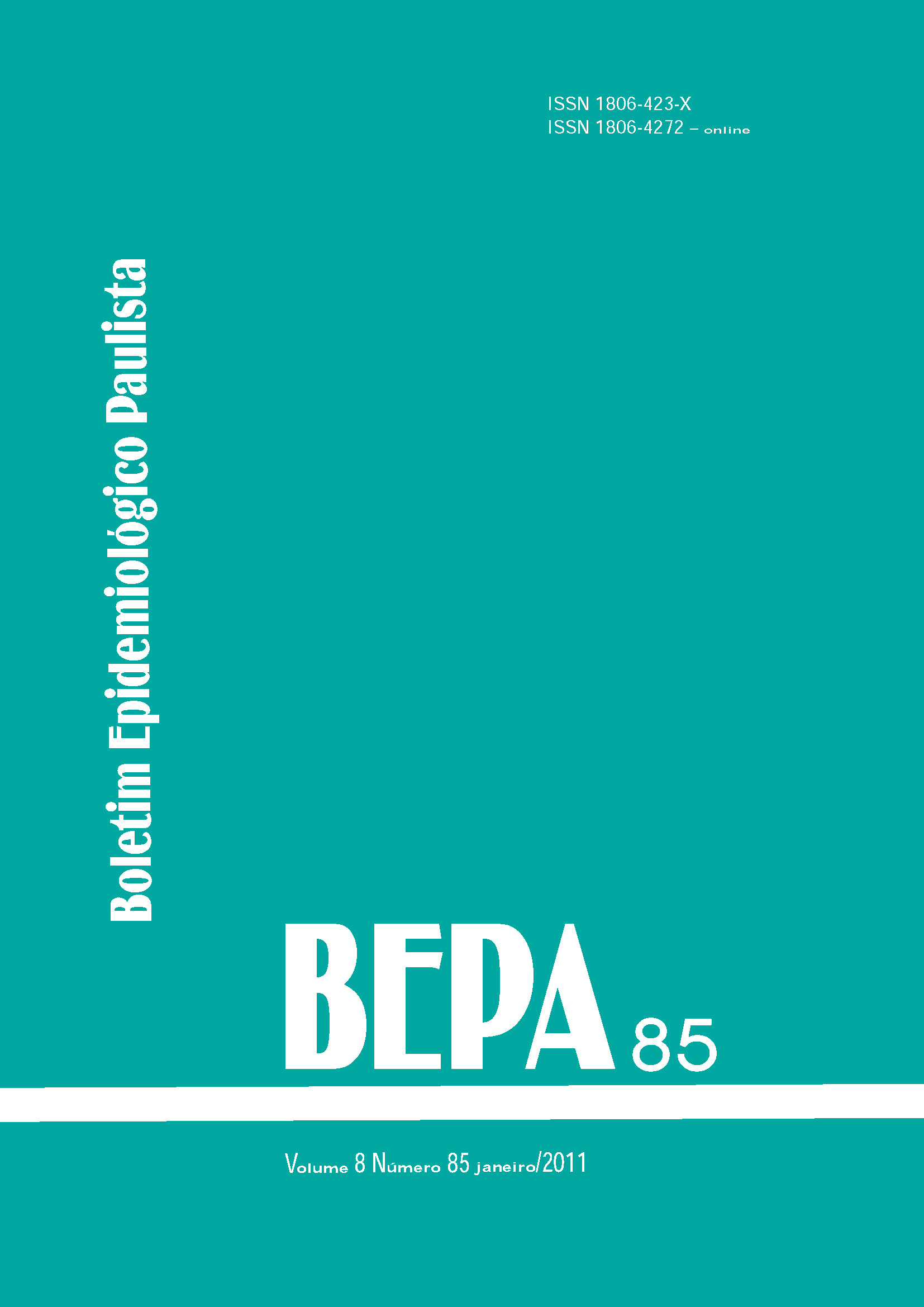Abstract
New viral pandemic influenza subtype H1N1 2009, resulting from genetic recombination of swine, avian and human virus, is globally widespread. We present the investigation of the first death related to infection by the H1N1 2009 influenza virus occurring in the State of São Paulo, performed with the aid of EPISUS-SP. Objectives of this study: investigating the first confirmed death in the State and to ascertain the diagnosis; describing the cases according to time, place and person; identifying the index case in the transmission chain with epidemiologic link to the family and investigating and characterizing the possible occurrence of sustained transmission of pandemic influenza H1N1 2009in the city of Osasco, São Paulo. Adolfo Lutz Institute reported the positive results for pandemic influenza in the post-mortem blood collected from the child. This information led us to consider the hypothesis that the index case from the brothers could be the sister. Contacts occurring up to seven days previous to the onset of symptoms in the brothers were identified: 1) family and close friends; 2) school; 3) English school; 4) school bus. Daily activities of the brothers showed they did not go outside the city of Osasco during the period under investigation. MCL was the first death in the city associated to autochthonous pandemic influenza, with no epidemiologic link to imported cases of the disease. Existence of a family outbreak of infection by pandemic influenza H1N1 2009 was ascertained,with nine confirmed cases; probable source of infection was MCL. Sustained transmission of the pandemic influenza virus H1N1 2009 was confirmed in the country. As recommendations deriving from this study, change in case definition was proposed, including autochthonous cases, changes in norms and procedures designed to identify, investigate and manage flu syndrome cases; training of epidemiologic surveillance teams of the cities in order to face possible newpandemics.
References
Brasil.Ministério da Saúde. Secretaria de Vigilância emSaúde. Situação epidemiológica da influenza pandêmica (H1N1) 2009 nomundo e no Brasil, até a semana epidemiológica 47/2009. [acesso em15 dez 2009]. Disponível em: http:// portal.saude.gov.br/portal/arquivos/pdf/b oletim_influenza_se_47.pdf.
Centro de Vigilância Epidemiológica - CVE. Infecção humana pelo vírus influenza A/H1N1 [norma técnica na internet]. São Paulo; 2009 [acesso em15 jul 2009]. Disponível em: ftp:// ftp.cve.saude.sp.gov.br/doc_tec/RESP/NT09.
Fred J, Figueira GN, Albernaz RM, PelliniACG, Ribeiro AF, Frugis Yu AL, et al. Vigilância da influenza A/H1N1, novo subtipo viral, no Estado de São Paulo, 2009. Bepa [periódico na internet]. 2009;6(65):4- 15. Disponível em: http://www.cve.saude.sp.gov.br/ agencia/bepa65_influenza.htm.
Cohen J. Flu researchers train sights on novel tricks of novel H1N1. Science. 2009;324:870-1.
EnserinkM. Swine Flu names evolving faster than swine flu itself. Science. 2009;324:871.
Trifonov V, Khiabanian H., Rabadan R. Geographic dependence, surveillance, and origins of the 2009 influenza A (H1N1) virus2009. Influenza A (H1N1) virus. N Engl JMed. 2009;10.1056/NJEM p0904572.
Brasil.Ministério da Saúde. Ocorrências de casos humanos de infecção por influenza A (H1N1) [informe técnico na internet]. Brasília: Secretaria de Vigilância em Saúde/MS [acesso em15 jul 2009]. Disponível em: http:// portal.saude.gov.br/portal/arquivos/pdf/ informe_influenza_a_h1n1_28_06_2009.pdf.
Emergência de Saúde Pública de Importância Internacional. Gabinete Permanente de Emergências emSaúde Pública. Secretaria de Vigilância emSaúde. Protocolo de Protocolo de notificação e investigação [protocolo na internet]. 2009 [acesso em28 jun 2009]. Disponível em: http://portal.saúde.gov.br/portal/ arquivos/pdf/influenza_protocolo_procedi mentos 28/06/2009.

This work is licensed under a Creative Commons Attribution 4.0 International License.
Copyright (c) 2011 Daniel Marques, Gerrita CN Figueira, Eduardo S Moreno, Carmecy L Almeida, Ruy Cordero, Kátia Campos , Cláudio T Sacchi, Maria CST Timenetsky, Telma RMP Carvalhanas RMP Carvalhanas, Beatriz Y Kitagawa
